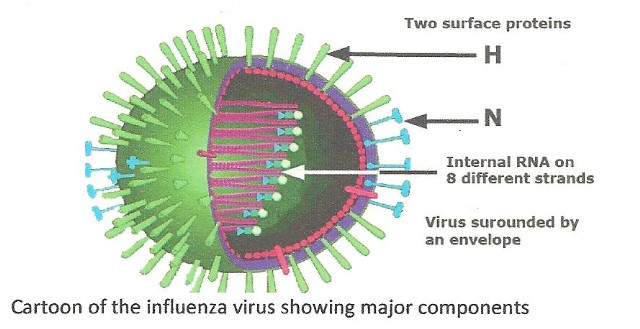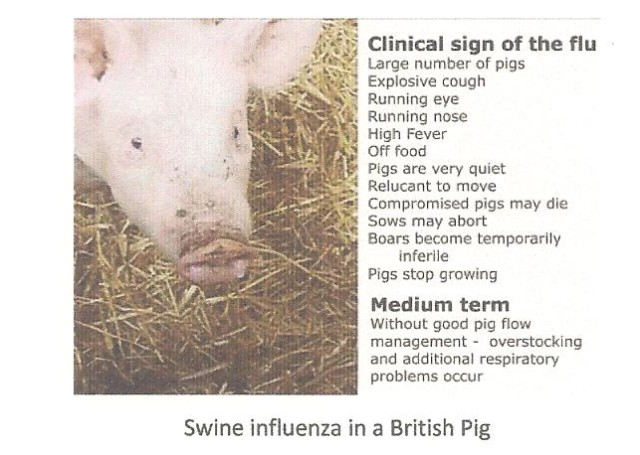Novel Influenza A (H1N1)
Dr John Carr
Portec Australia and Murdoch University
The emergence of a new influenza strain in April 2009, has caused a great deal of public concern. Influenza is one of a few pathogens that can spread between man and other animals – zoonotic. It is particularly worrisome because it can move between very different animals – not just between mammals but also between birds and man. Most pathogens can only move to closely related species – for instance between man and monkeys.
The most serious effects of influenza are that it can kill. The mortality rate with novel influenza viruses has been in excess of 90%. Therefore, there was naturally a great deal of concern both real and political. AS the outbreak and initial mortalities occurred in Mexico, this country effectively went into lockdown from the end of April into May. However, a few tourists from Mexico left during the end of April and spread the novel virus around the world.
Fortunately, while the new virus could spread from person to person, the rate of spread and relatively slow for an influenza virus and the mortality rate was low, allowing countries to invoke a series of measures to identify high risk visitors. These were placed in quarantine with limited movement and contact with the outside world, until demonstrated to be negative or not shedding.
Why the reference to swine influenza?
In 1918 the world suffered a major influenza pandemic, in which 50 million or more people died. In North America this virus mutated to a point where it could move into pigs. H1N1 become the predominant strain of influenza virus is pigs and the condition in pigs is called swine influenza.
Over the last 90 years, this particular H1N1 has caused transient problems in pigs and has over the last 30 years been joined with a couple of influenza virus strains, H3N2 for example. It has been recognized that the resident H1N1 strain continued to evolve in the pig and from time to time infected people. However, people infected only rarely passed the virus on to other people. The particular Novel H1N1 of April 2009 unfortunately can clearly pass from person to person. The transmission of influenza virus strains is through the respiratory tract and the virus is killed rapidly in the air. Meat and meat products will not transmit the virus.
Is this a threat to Western Australia?
Yes on two fronts.
It is a threat to the people of Western Australia who may contract the virus from an infected person, albeit the infection can only spread for a couple of days. While it is now expected the mortality will be low, people with clinical influenza of any strain can be seriously sick and require hospitalization. Seasonal influenza – many of which are H1N1 viruses – officially kills 35,000 Americans a year – mainly people who are unfortunately infirm.
It is a threat to the pet pigs. While the novel virus has not been found naturally in pigs – currently including Mexico, its transmission to pigs occurred in May 2009 in Canada. Here a clinically sick worked, within 2 days of arriving from Mexico, transmitted the virus to pigs he was in contact with. The pigs became sick and recovered, but there would be economic and production losses. Many pet pigs are free of all influenza strains. This is an important part of our Biosecurity programme and we should work to keep our negative status.
Recommendations
· No staff with clinical signs of influenza should have contact with pigs.
· No staff who believe they have had contact within 3 days of a person exhibiting signs of Novel H1N1 should have contact with the pigs
· All visitors from abroad should have no contact with pigs for 7 days after arrival.
What if a pig farm becomes positive to influenza?
Swine Influenza is an exotic disease of pigs and therefore, the government veterinarians would have the final say in procedures.
Euthanasia of all the pigs and quarantine of in-contact farm staff would be the most effective measure. However, influenza does not live long in the environment and measures could be designed to eliminate the virus from the farm, without the need to destroy all the pigs, but this would be on a farm by farm basis. The major complicating factors are: piglets are constantly being born, and initially, these will be provided with no protection via their mothers colostrum, and nursery weaners, who become infected after their colostrum cover has waned. Note all infected pigs would become and remain antibody positive, complicating further testing.
If no action was taken, then the specific swine influenza strain would progressively spread throughout the pig industry and become a persistent drain on production, as has happened in almost all other pig producing nations.
For further information visit: www.portec.com.au

